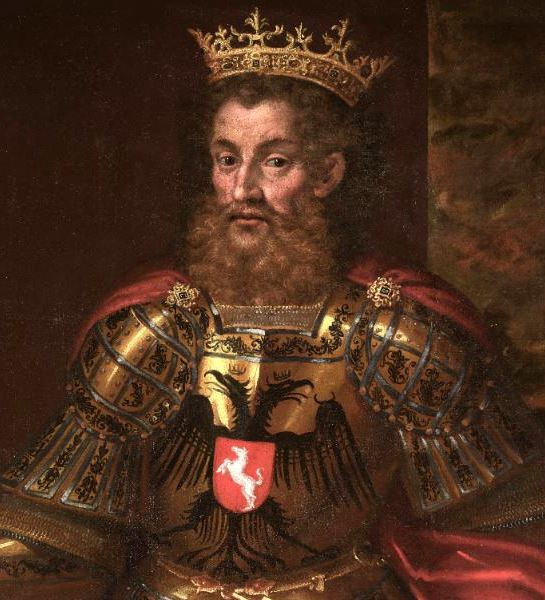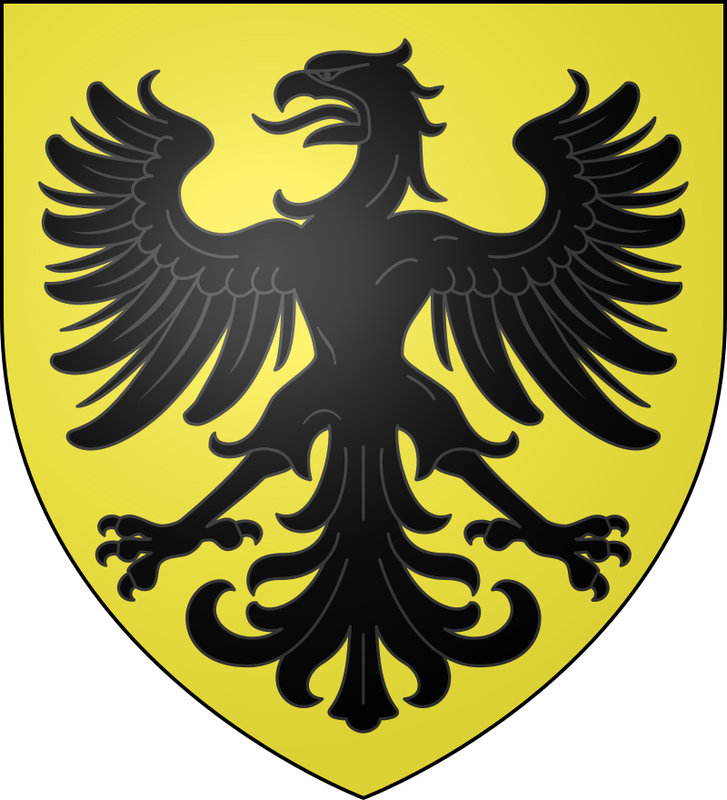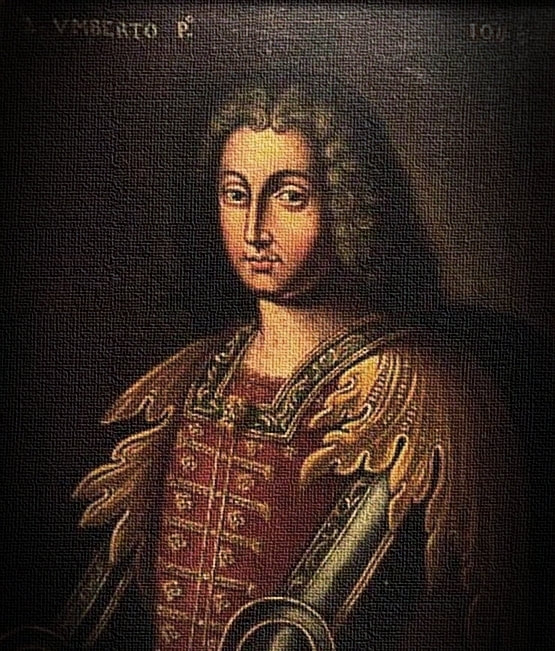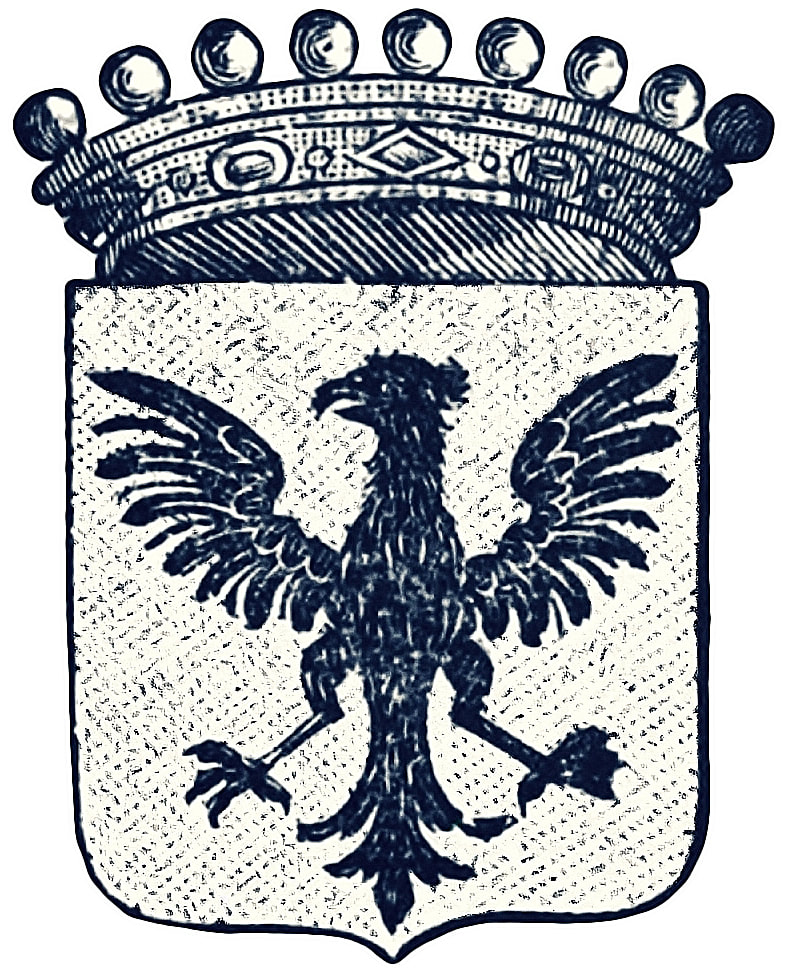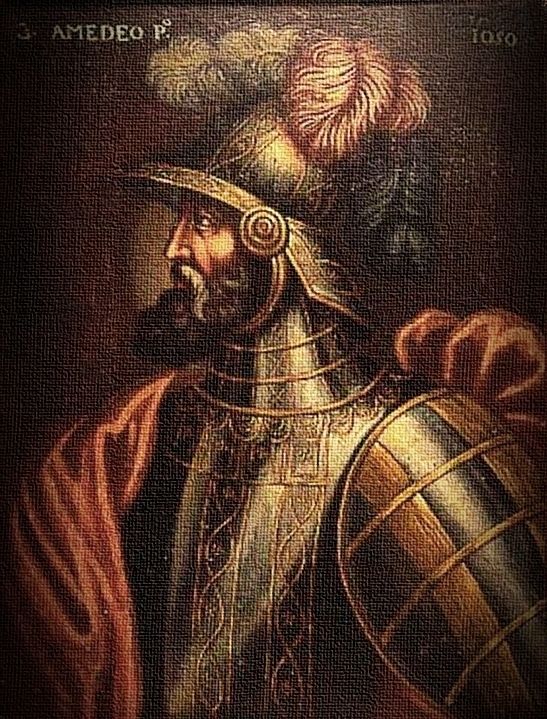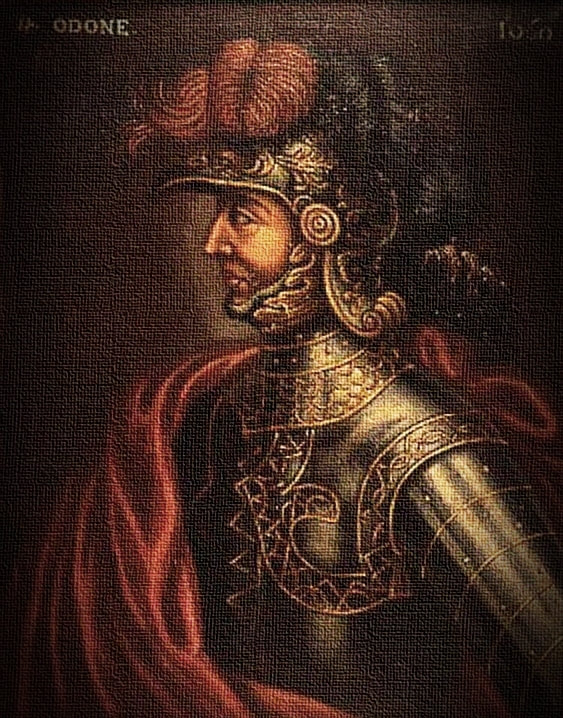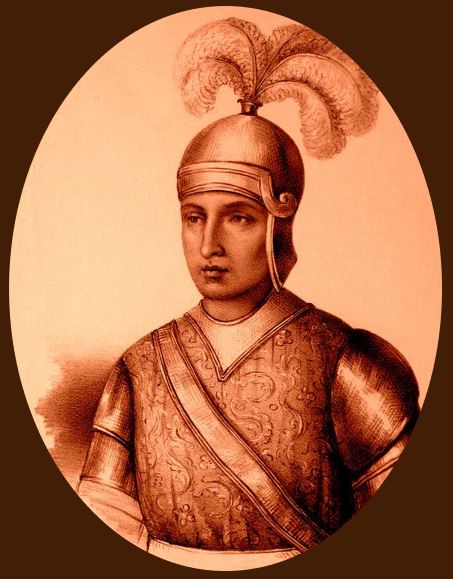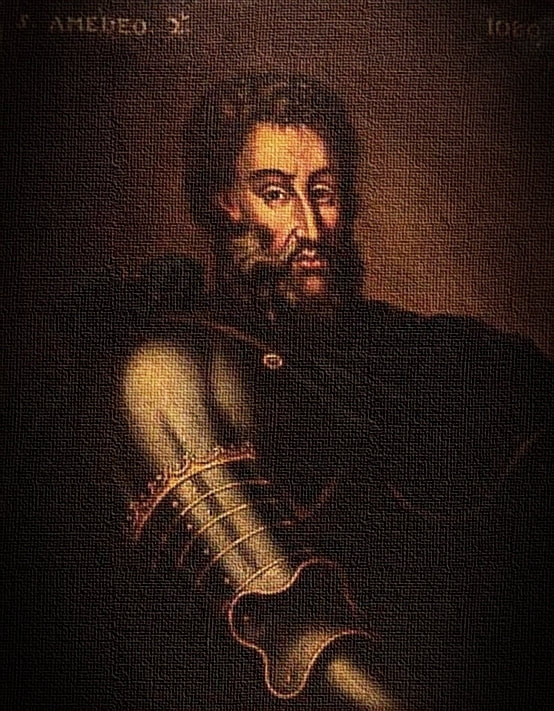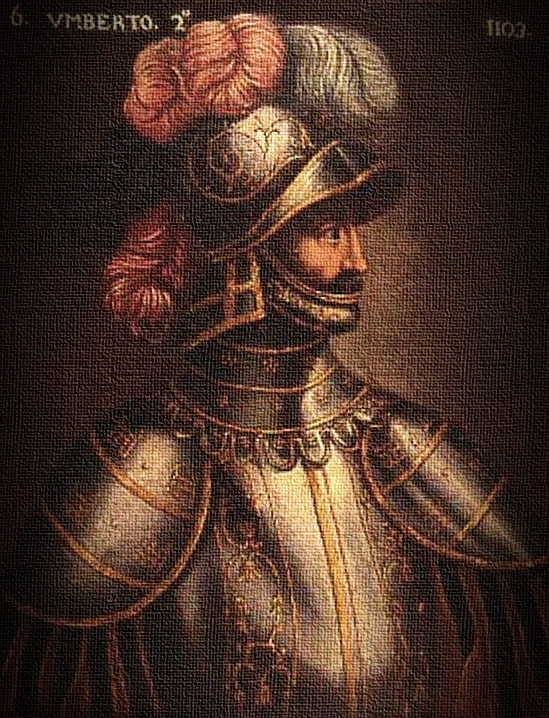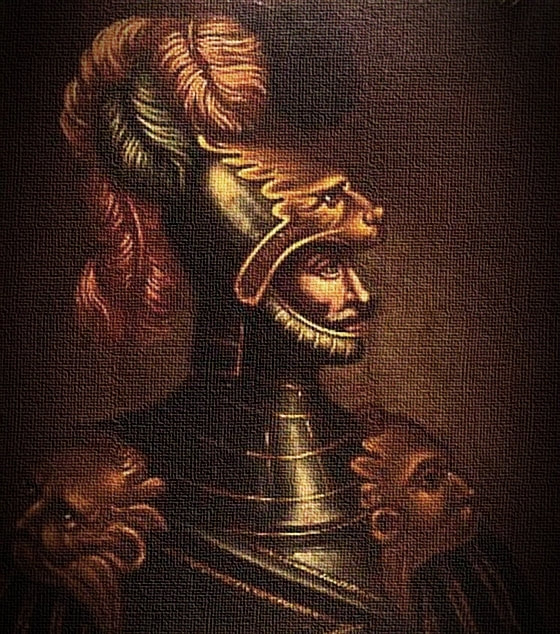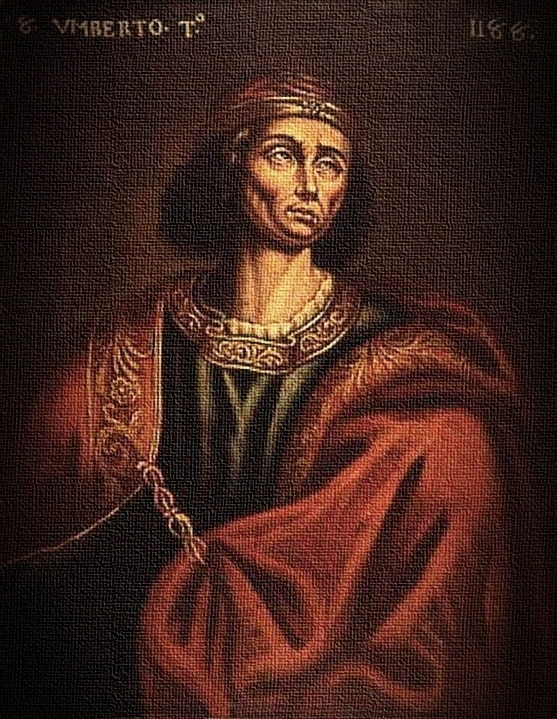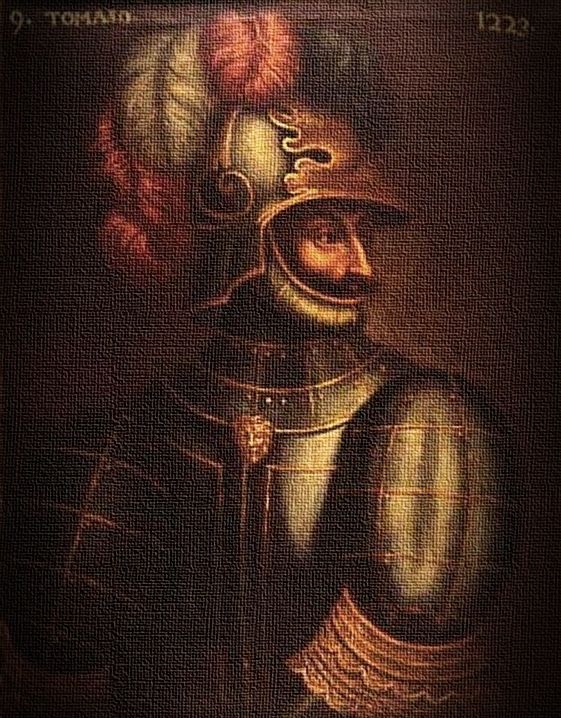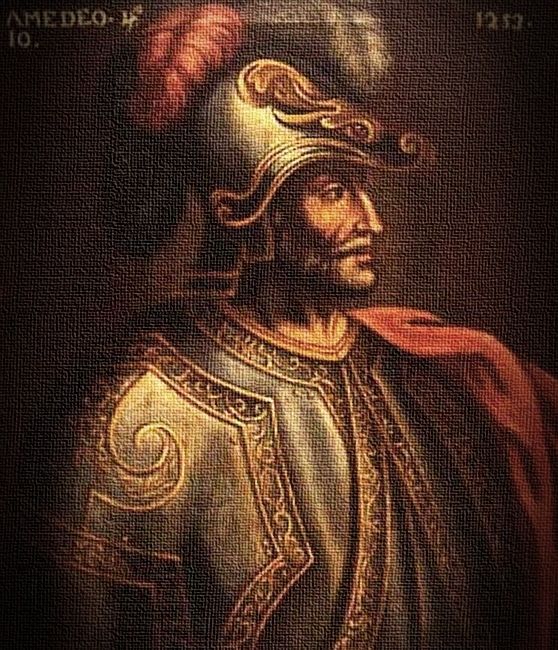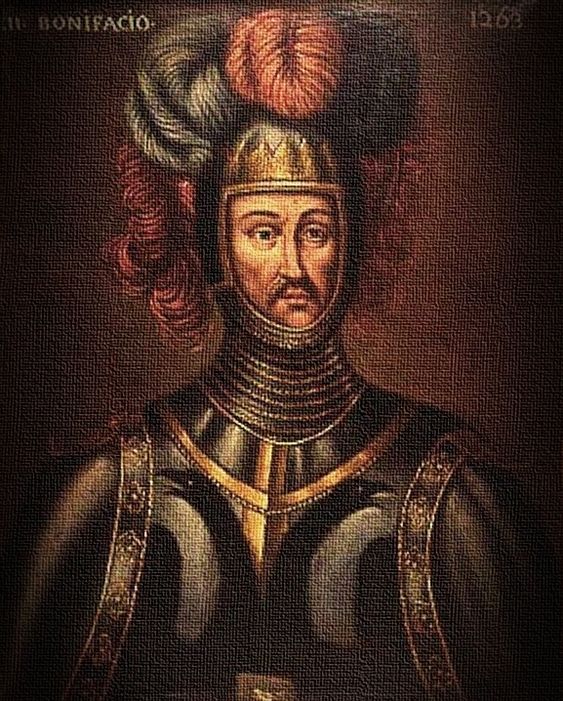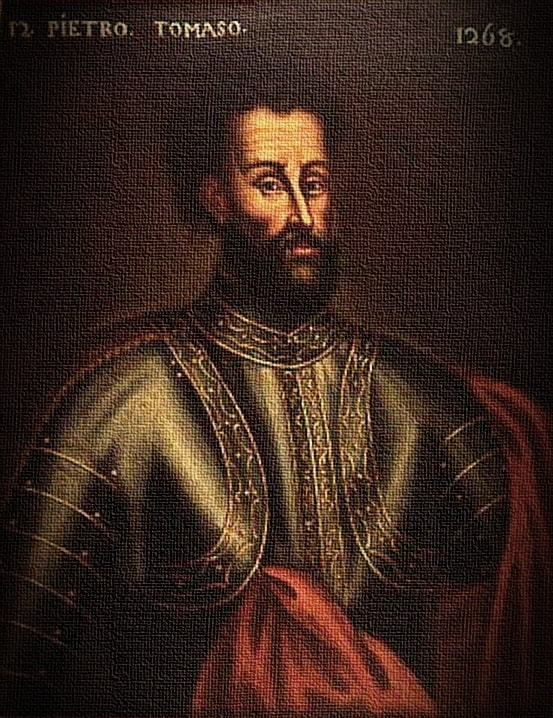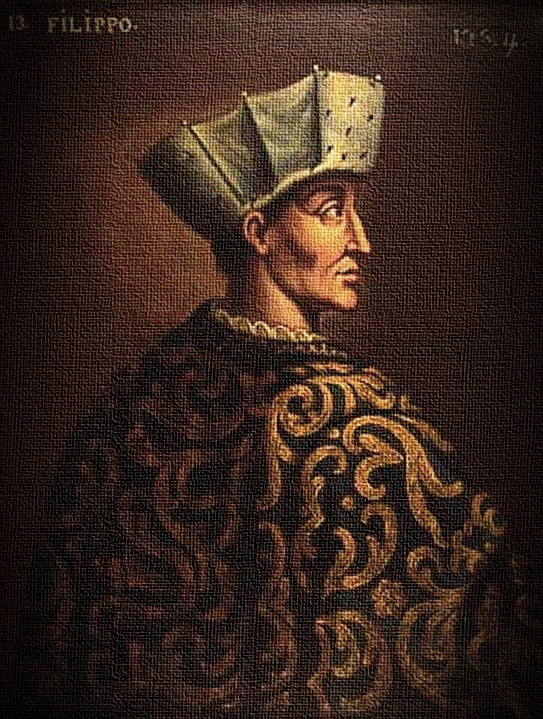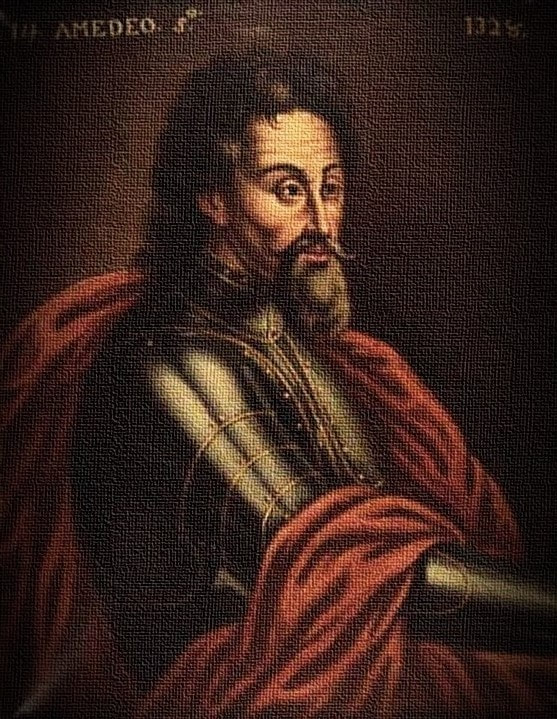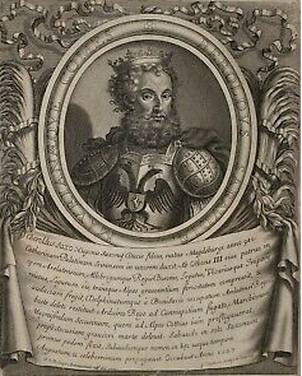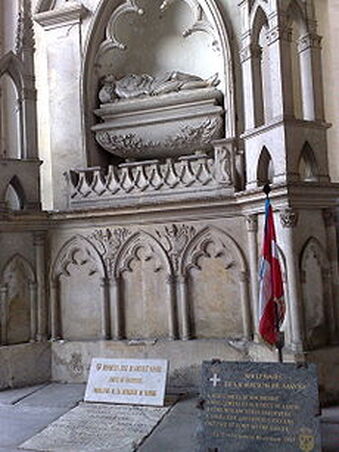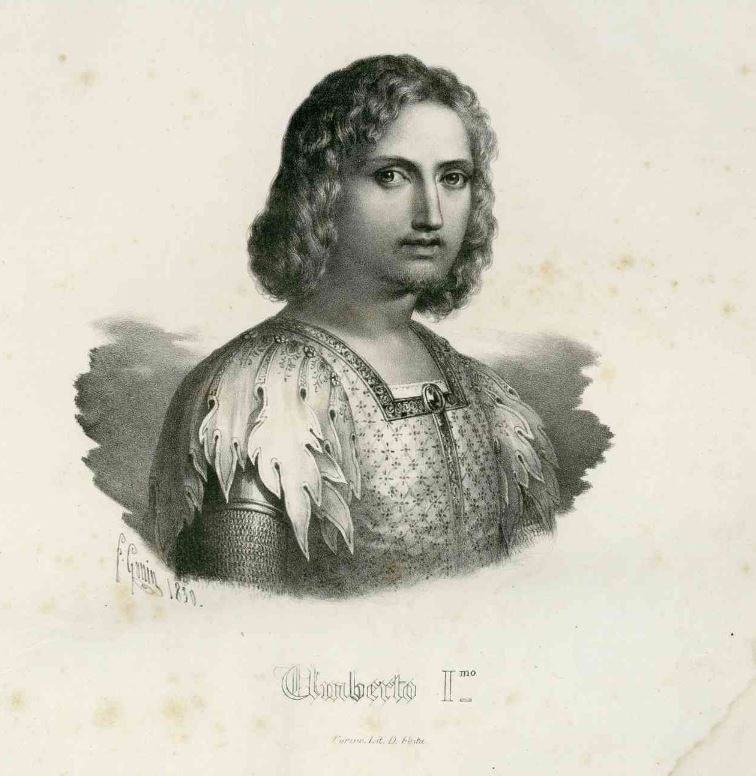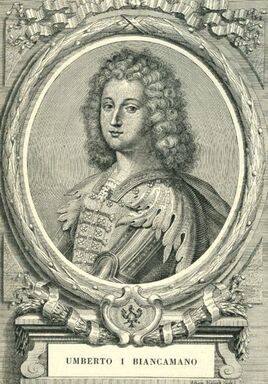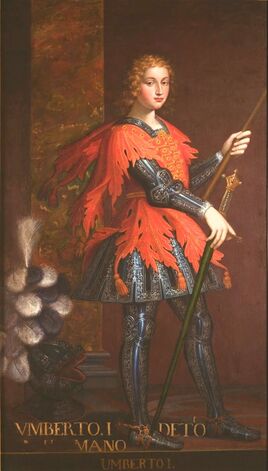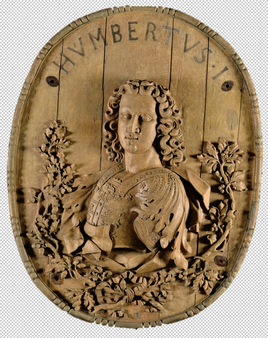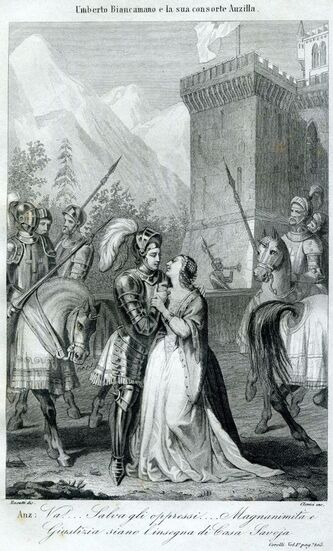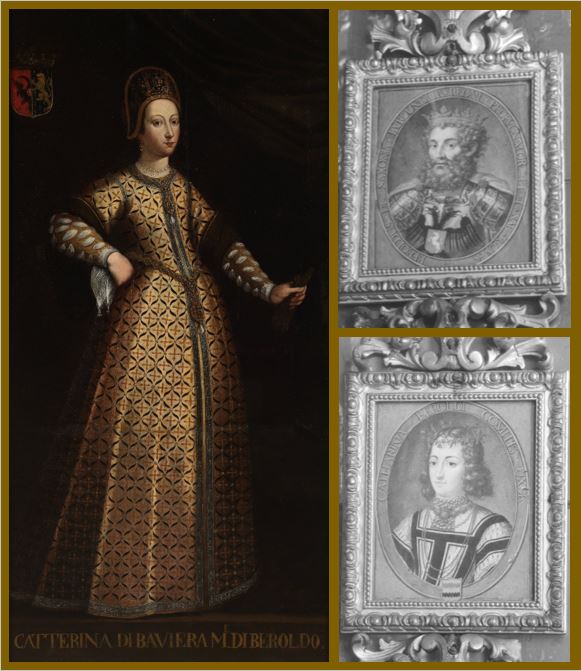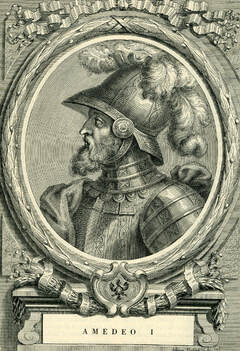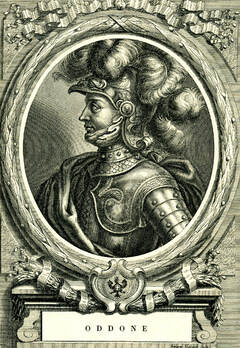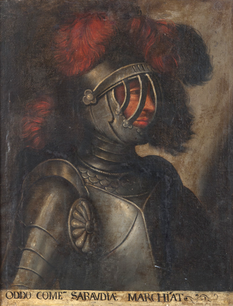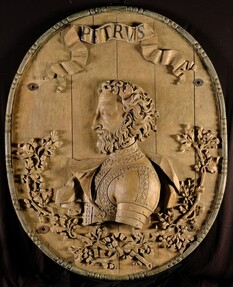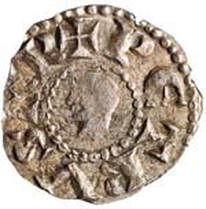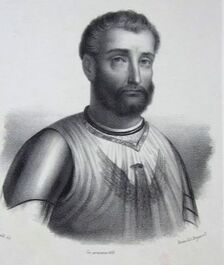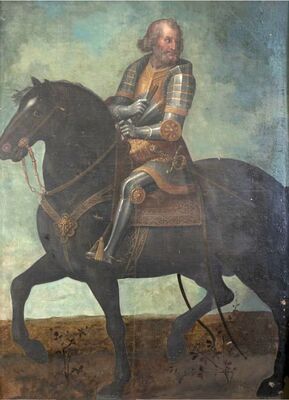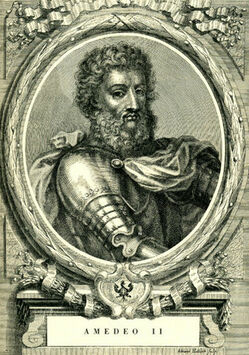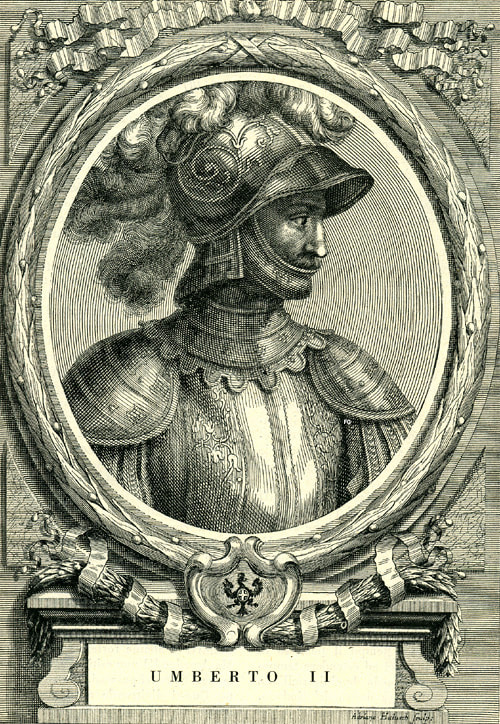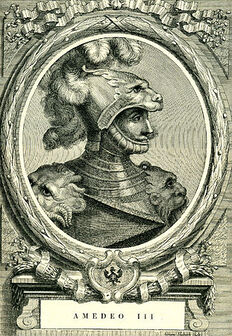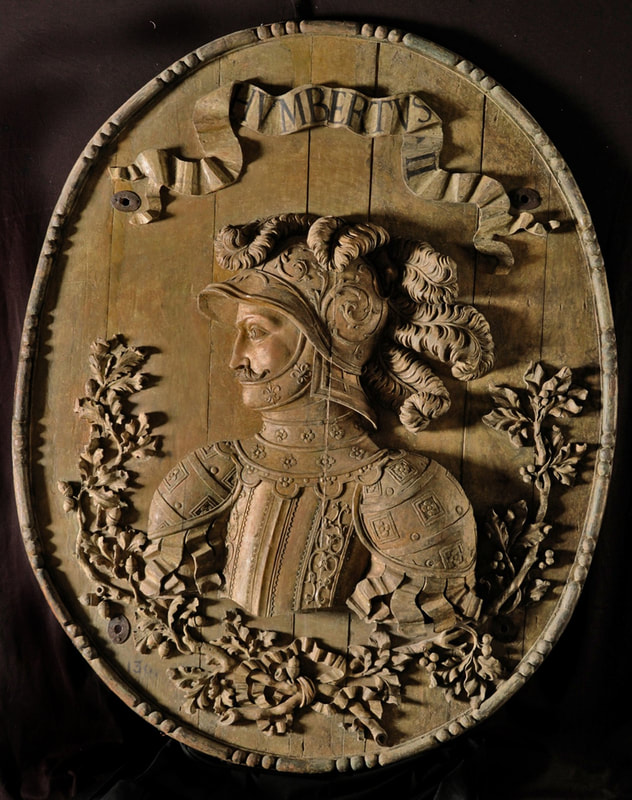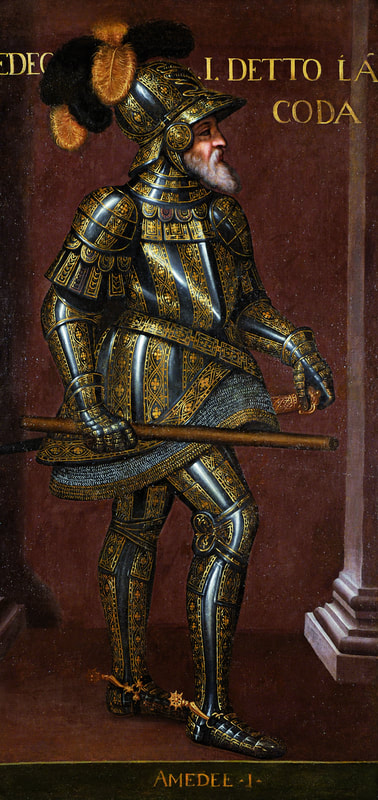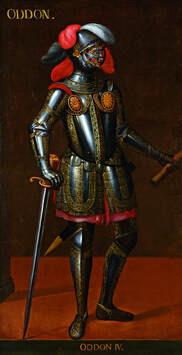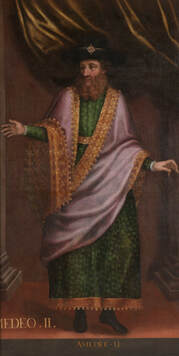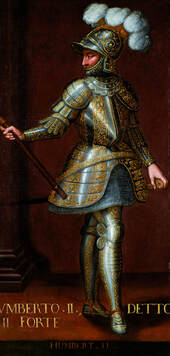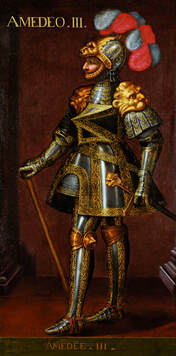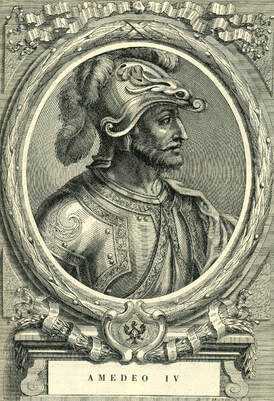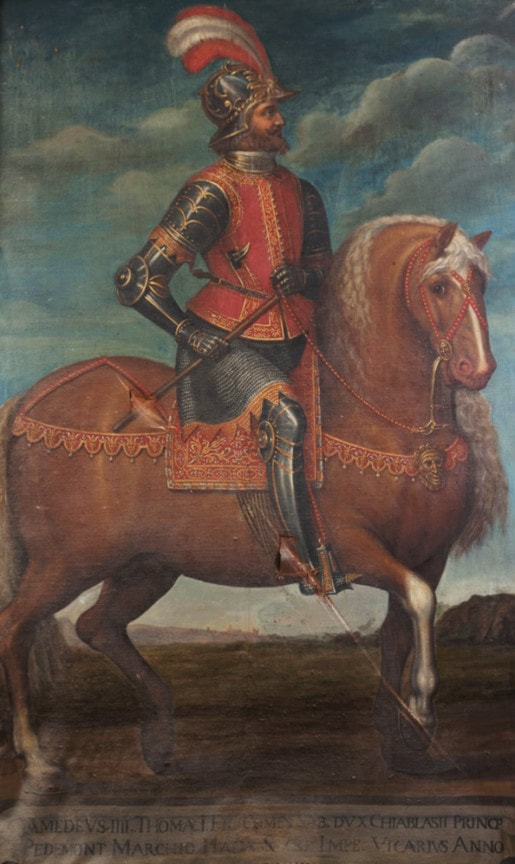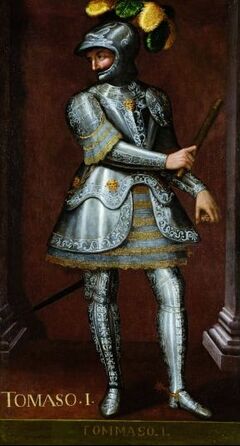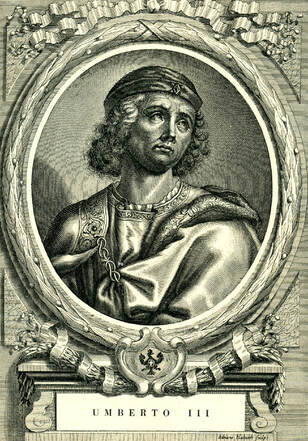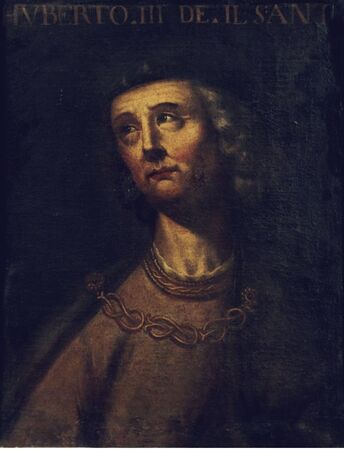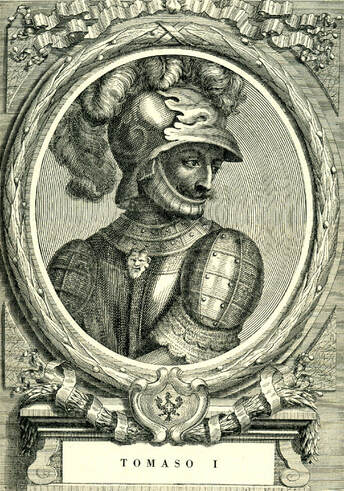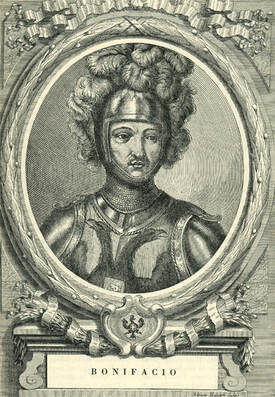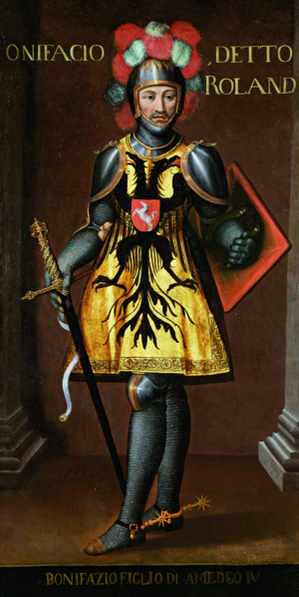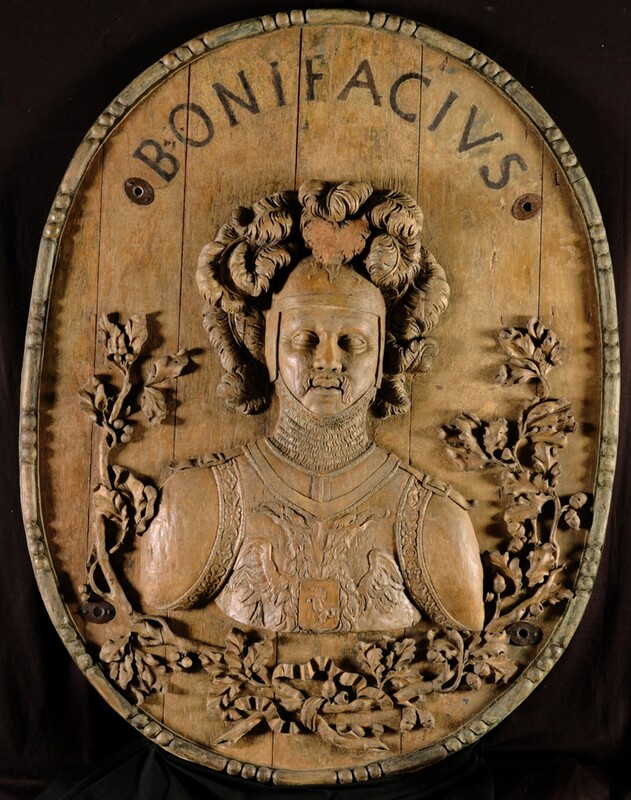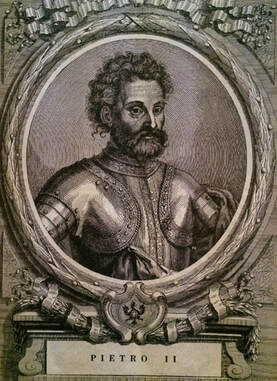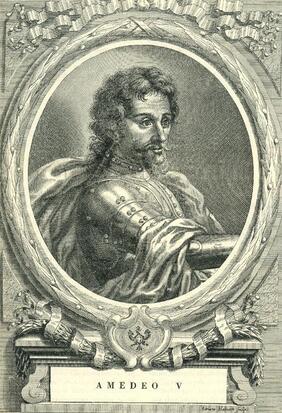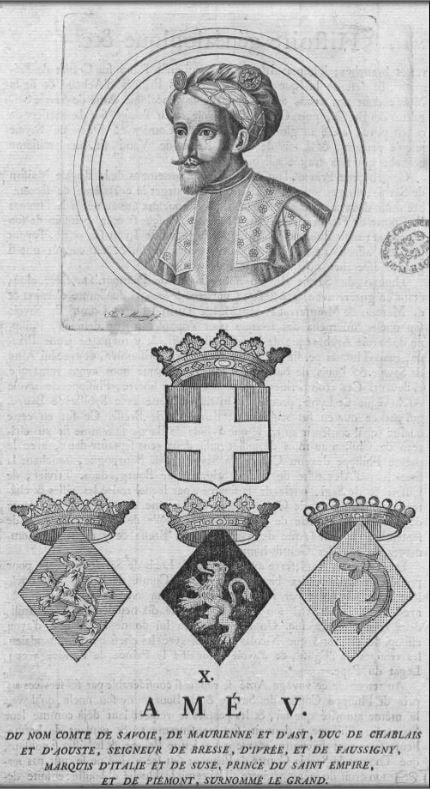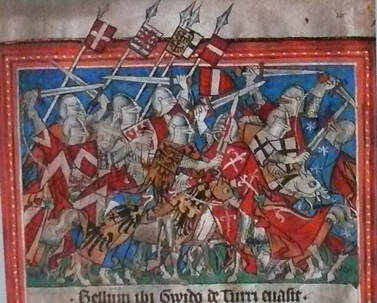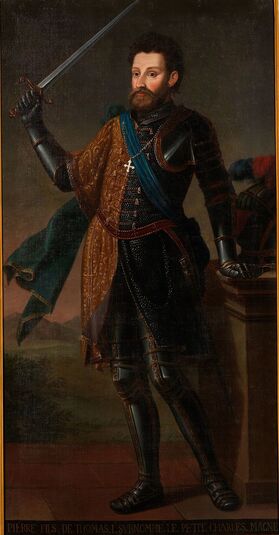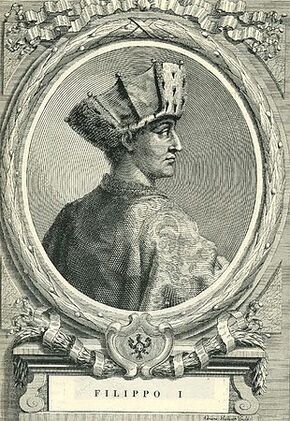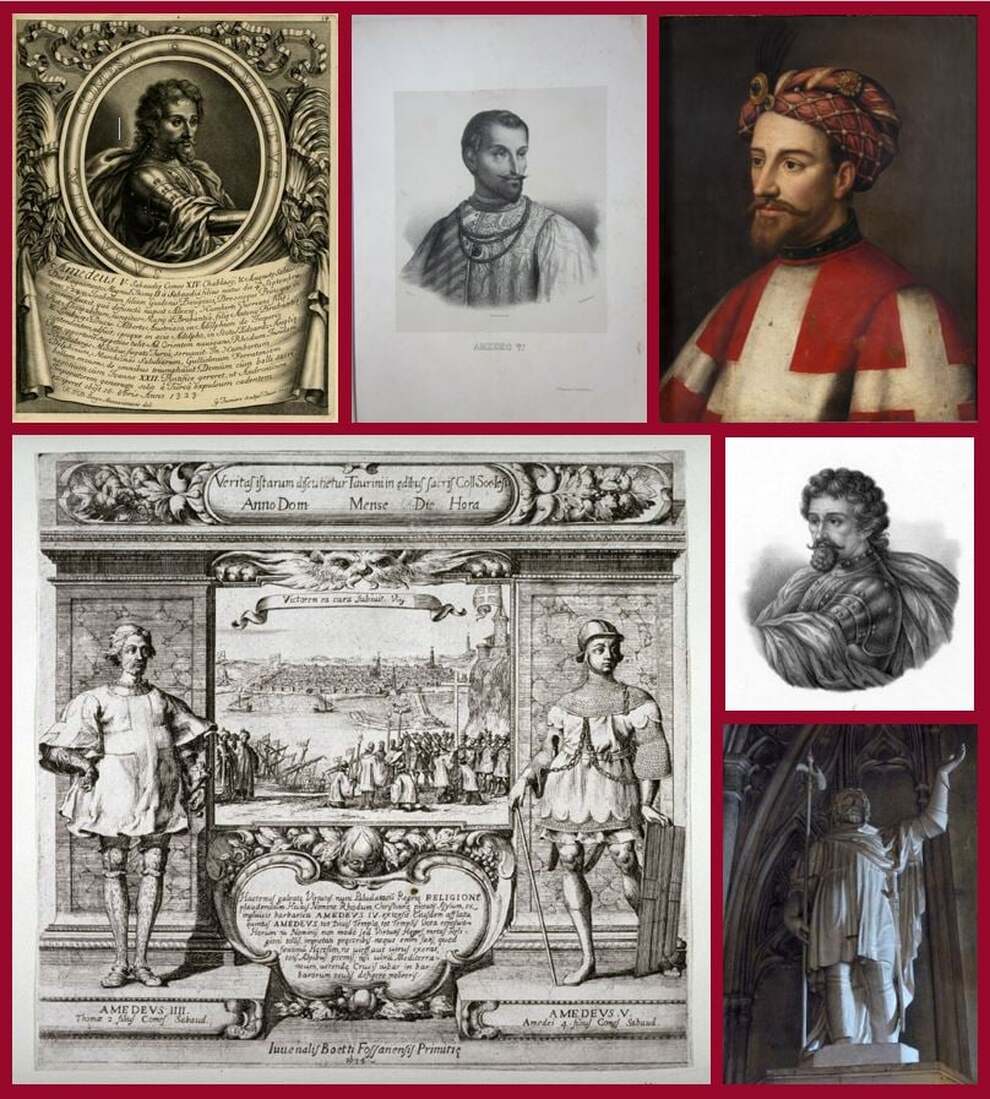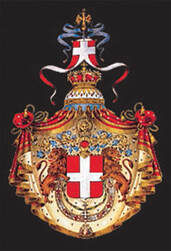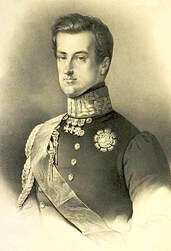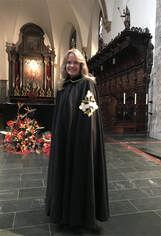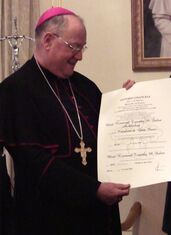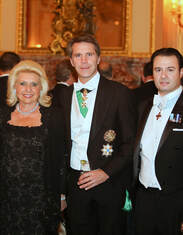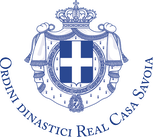American Delegation of Savoy Orders
Beginnings: The Early Counts of Savoy (1003-1323)
|
The House of Savoy is one of the oldest royal dynasties in Europe, which celebrated its millennium in 2003. For antiquity of origin and continuity of succession from 1003 to 1946, the dynasty stands in the foremost rank of the royal houses of Europe. The Savoy family has furnished, in direct descent, counts, dukes and kings that successively ruled the destinies of the land and a genealogy of more than forty princes, who, sprung from one lineage, reigned in an uninterrupted line and handed down the traditions of a common ancestry through no less than thirty generations.
The origins of the dynasty is closely tied to the Savoy region which had for its boundaries Italy, Switzerland and France, containing within its limits some of the highest peaks of the Alps, with picturesque scenery, lavished by mountains, lakes, valleys, rivers and fertile plains. A mystery surrounds the birth and parentage of Humbert the Whitehanded, the first count of Savoy. Opinions of all sorts prevail as to the parentage of the White-handed Count, and he is alternately accredited with a Saxon or an Italian origin, according to the sympathies of his biographer; however, it is generally acknowledged that Berauld or Beroldo or Geroldo of Saxony has the honor of being Count Humbert's father. Beroldo's prowess on the battlefield allowed him to conquer the County of Moriana and overcome the lords of Susa and Piedmont and on the death of Rudolph, the last King of Burgundy, he was appointed Governor-General over the land. He died in 1026 and was buried in Arles. Another competitor for Count Humbert's parentage is Manasse, Count of Savoy. The preference for Saxon ancestry is strengthened by the close affinity of heraldic devices of the Houses of Savoy and Saxony: both bore the Saxon eagle; both had supporters formed of two lions; both, for centuries, quartered a shield on which was inscribed the motto "Saxe"; both Houses owned St. Maurice as their patron saint. Count Humbert's mother, Ermengarde, was of noble rank, who, in 1011, married, as her second husband, King Rudolph III of Burgundy. |
|
The Romans knew the area of Savoy as Saubauda. The Burgundians overran the Alpine region after the fall of the Empire in the 5th Century and quickly annexed it to their domains. Almost a century later, the Franks followed the Burgundians and by the 9th Century, Savoy was an integral part of the Frankish Emperor Charlemagne's Empire. The Emperor and his descendants carved up the area into fiefdoms and counties. The subsequent disintegration of the Carolingian Empire brought Savoy once again in the sphere of the Burgundian Kingdom. Petty nobles who ruled the parts of the terrain frequently contested sovereignty over the area.
The first Count of Savoy married the daughter of the lay rector of the Abbey of St. Maurice d'Agaune, a site that would later figure prominently in the history of the House and the Order of Sts. Maurice and Lazarus. Humbert had established the foundation of his dynastic house in Savoy and proven himself an able vassal of the Holy Roman Emperor. In an age of uncertain alliances and even shorter longevity, he had a successful and long life, pacifying the area of Savoy and its surroundings and emphasizing the charitable work of the monasteries and churches. When he died in 1048, he was buried in the Cathedral of St. Jean de Maurienne.
|
|
The founder of the Savoy dynasty, Humbert, the "Whitehanded" (980-1048), was born in the year 980 of possibly Teutonic ancestry. He was a knight of the Holy Roman Empire and assisted in the campaign of King Conrad the Salic to solidify his claims to Burgundy. (The basis of his nickname is not recorded and has been the subject of speculation. Two theories are that he was extremely pale or that his hands were snow-like in appearance owing to the Alpine climate. Another attributes it to a mistranslation of the white walls of his castle.)
By 1003, the Emperor had accorded him the title of Count of Salmourenc in the Viennois. By 1017, he assumed the County of Nyon by Lake Geneva, and in rapid succession, received the territory now known as the Val d'Aosta, with its strategic mountain passes through the Alps. By 1034, he had control of the counties of Savoy, Maurienne, Belley, part of the Chablis and the Tarantaise. Count Humbert I of Savoy commanded access to three Alpine passes; namely Mount Cenis and the two St. Bernard passes.
|
|
Humbert I was succeeded by his son, Amadeus I (died 1051), whose reign as Second Count of Savoy lasted a brief three years, ending in 1051. His notable accomplishment was the founding of the Priory of Bourget-du-Lac.
Humbert's second son, Otto (died 1060), Third Count of Savoy, succeeded his brother. Otto had married well: his wife, Adelaide, was the daughter and heiress of Odelrico Manfredi, the Marquess of Susa, who ruled over most of modern day Piedmont and Liguria, including the County of Turin. The Holy Roman Emperor affirmed his new domains and Otto, in turn, proclaimed his authority by minting coins. He also dominated territories on both sides of the Alps, critical to Savoy's territorial integrity and independence. This would be a fundamental aspect of the state's foreign policy until 1859. He died in 1060 and was the first Savoy count to be interred in the Cathedral of St. Giovanni in Turin. The Fourth Count of Savoy was Peter I, the "Youth" (1048-1078), who ruled initially through a regent, his mother, Adelaide. He died in 1078 and was succeeded by his brother, Amadeus II (died 1080), as Fifth Count of Savoy. He added substantially to the Savoy patrimony through the dowry he received on his marriage to Giovanna of Geneva. After a reign of only two years, Amadeus was buried close to Humbert I. The accession of the Sixth Count of Savoy, his son, Humbert II "The Fat" (died 1103), saw the first open insurrection of the communes against the authority of the Count of Savoy. Humbert attempted to reconcile the Piedmontese communes with his central authority and achieved a degree of peace. That reconciliation with the communes was complete with the accession of his son, Amadeus III "The Crusader" (1095-1148). Deeply devout and loyal to the Church, the Seventh Count of Savoy restored the Abbey of St. Maurice d'Agaune and founded the Abbey of Hautecombe on the banks of the Lake Bourget in 1125. He also preferred and used the style of Count of Savoy instead of his other titles and was a Vicar of the Holy Roman Emperor. Amadeus III adopted as the family heraldic charge the cross of Savoy. He led many Savoyard knights alongside his nephew, King Louis VII of France, on the Second Crusade and died in 1148 on Cyprus, where he was buried in the Abbey of the Holy Cross. |
Portraits of the counts of savoy, originally in Racconigi Castle by unknown Piedmontese Artist, First Half of 17th Century, now in the collection of the Reggia di Venaria Reale in Turin
|
His son, Humbert III, called "The Blessed" (1129-1189), inherited Amadeus' religious convictions. Contemporary writings suggest that the Eighth Count of Savoy was deeply pious, preferring the life of a monk to that of a sovereign. He gave entitlements to monasteries and churches and encouraged them to increase their charitable works among the poor of Savoy and Piedmont. He played a decisive role in the organization of the chapter at the Abbey of Hautecombe. He desperately needed an heir and married four times in the effort. He died in 1189 and was the first Count of Savoy to be buried at Hautecombe. In 1838, Pope Gregory XVI decreed that he was Blessed Umberto III of Savoy and fixed his feast day as March 4th, the date of his death.
|
Amadeus IV was a scholar and diplomat. He devoted much of his time securing a balance between the Holy Roman Empire and France. One notes that he was the first ruler of Savoy to employ the additional title of Duke of Aosta and that the coins he minted used the ancient Latin name of Sabaudia, or Savoy. He was buried at Hautecombe after his death in 1253 and was succeeded by his son, Boniface (1224-1263).
Young Boniface was a youth of 19 when he succeeded as Eleventh Count of Savoy and had little training. His regent was his uncle Peter. He was captured by Piedmontese rebels of his uncle Thomas II and died a prisoner in Piedmont in 1263. He was interred at the Cathedral of St. Jean de Maurienne, near Humbert I and Amadeus II. |
Humbert's son by Clemenza of Zharinghen, Thomas I (1177-1233), succeeded as Ninth Count of Savoy in 1189. He reorganized the administration of the county, granting more rights to the communes. By allying himself with the Holy Roman Emperor he also increased the stature of the dynasty: the Emperor made him an Imperial Vicar and extended his authority to other areas, including Geneva, Savona and Saluzzo. At his death in 1233, Humbert's various territories were divided among his heirs. Amadeus IV (1197-1253) succeeded as Tenth Count of Savoy while his brother, Thomas II, obtained Piedmont, Aimone the County of Chablais, and Peter and Philip received other fiefs. The brothers agreed to be nominal vassals of Amadeus IV.
|
Royal House |
History |
Orders |
Members |
News & Events |



